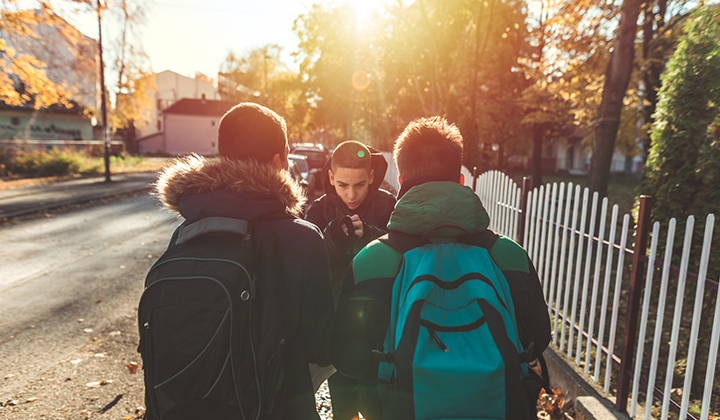
Children often experience issues at school that go beyond classwork. Kids may have a fight with a friend, or they aren’t sitting by the same group of kids at lunch anymore. While we often worry kids are being bullied, they may not be. One of the most misunderstood issues is if a child is being bullied, or if it’s actually conflict. Parents and students alike often use bullying as a blanket statement for many issues, but there are important key differences between bullying and conflict, and differences in how to address each.
Conflict vs. bullying
For a situation to truly be bullying, there must be a power difference – perceived or actual. Some examples could be the size of the child, social standing or strength. It’s not something that typically happens between friends.
The second thing you must keep in mind is that bullying is a repeated action. It’s not a one-time thing, it continues to happen. So, if your child experiences one time of being called a name, that’s not bullying that may be teasing. It could, however, become bullying if it persists and there’s a power difference, so it would be something to keep an eye on.
It also must be intentional. This means the action is meant to do harm, to take power or to take something from someone else. Typically, the victim is upset, but the bully is not and doesn’t accept responsibility for their actions or show remorse.
There are different types of bullying to look out for:
- Physical – involves hurting a person’s body or possessions. This can include hitting, kicking, spitting, tripping, pushing, rude hand gestures and taking or breaking someone’s things.
-
Verbal – saying or writing mean things. This can include teasing, name-calling, taunting and threatening to cause harm.
-
Social – also known as relational, involves hurting someone’s reputation or relationship. This can include leaving someone out on purpose, spreading rumors, embarrassing someone in public and telling other kids not to be friends with someone.
-
Cyber – bullying that takes place online or on electronic technology such as cell phones, computers, text, chat, and tablets. This can include mean text messages, comments or emails, rumors on social networking sites and embarrassing pictures, videos, websites or fake profiles.
Conflict, on the other hand, is often a disagreement between kids of equal power. The situation may include being mean or wanting to upset the other person, but it’s not to seek control or attention. When kids have conflict, they often feel bad about it and take some ownership for their actions.
Why the difference is important
The way to handle bullying and conflict is very different. If it’s conflict, encourage those kids to work the issues out together. When the issue is peer conflict, then it gives an opportunity for the kids to learn listening and conflict resolution skills where both parties can agree on a resolution.
If it’s truly bullying, then it could be harmful to the kid who is being bullied to leave them to work it out. It, in fact, could be damaging to that child. When it’s truly bullying, the adults in the situation need to address it with the children separately – not have the parents work it out between themselves, but have them talk with their own child and the school separately.
Time is of the essence. Bullying situations must be dealt with quickly so the school can address the issue with the child and parent and work on a plan for safety, discipline and/or consequences.
Tips for parents
The biggest tip I have for parents is if you think your child is being bullied, report it. Schools and teachers can help, but only if they know what’s going on. We can get involved and offer help for both bullying and conflict, but we have to have someone report the issue. Most schools have a “report bullying” link on their website, or you can report it to a teacher or counselor at school.
Bullying is a serious issue for both the bully and the victim. It can lead to negative mental and physical health conditions that range from school performance to depression. Some things for parents to look for if you think your child is being bullied:
- unexplained injuries
- lost belongings - like they keep losing their lunch box or something comes home destroyed
- school avoidance that lasts longer than a week
- change in eating habits
- difficulty sleeping or having nightmares
- declining grades
- avoiding social situations
If you do notice any of these signs, ask the child if they are getting bullied. Other ways to form the question may be “Do you feel safe at school?” or “What do you do at lunch?” so that they may feel more comfortable to talk about their school environment rather than bullying. If you are concerned, you can report it to your school and the counselor can help.
More tips for how to respond when you see bullying for both kids and adults are available at www.RedCardKC.com.

